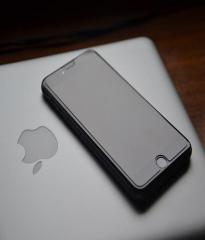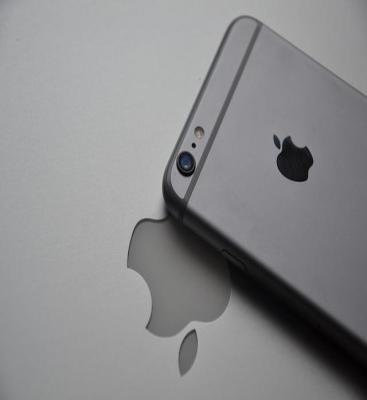 New security measures are being placed at airports around the U.S. – and they are meeting with major protests by travelers. Many people are complaining about the new full-body scanners, which visualize the passenger without clothing, as well as the “pat-down” that is provided for those who refuse to pass down the scanner. Some passengers have complained that the new, more aggressive body search is a violation of their personal space.
New security measures are being placed at airports around the U.S. – and they are meeting with major protests by travelers. Many people are complaining about the new full-body scanners, which visualize the passenger without clothing, as well as the “pat-down” that is provided for those who refuse to pass down the scanner. Some passengers have complained that the new, more aggressive body search is a violation of their personal space.
Yet, despite the huge publicity they’ve received, most passengers will not be subjected to full-body scans or pat-downs during their travel during this Thanksgiving season, as there are now just 400 body scanners at 70 U.S. airports, according to the Transportation Security Administration spokesman. This means that fewer than one-fifth of the 2,200 security lanes in the nation’s 450 commercial airports are already equipped with the machine.
In those places where the scanners are in place, however, there may be some delays due to protests of the new equipment. An online movement is encouraging people to adopt the day before Thanksgiving as National Opt-Out Day, in which they “opt out” of the new scanners and slow down the screening process by opting for a pat-down search instead. Consumer advocate Ralph Nader is among those support the opt-out initiative. But organizations such as the Air Travelers Association oppose the protest, saying it will just cause difficulties and delays for the passengers it is ostensibly meant to help.

 Did you know that every cell phone comes with a warning that it might be unhealthy to hold the phone near your head or stuffed in your pocket? This warning about the hazards of cell phone use comes on a tiny slip of paper which you probably barely even noticed when you unpacked your phone, right before you either held it next to your ear to make a call, or stuffed in your pocket so you could take it with you, since it is called a ‘mobile’ phone in some places.
Did you know that every cell phone comes with a warning that it might be unhealthy to hold the phone near your head or stuffed in your pocket? This warning about the hazards of cell phone use comes on a tiny slip of paper which you probably barely even noticed when you unpacked your phone, right before you either held it next to your ear to make a call, or stuffed in your pocket so you could take it with you, since it is called a ‘mobile’ phone in some places. What is now the greatest source of “E-waste” in the world? The answer is: Computers, monitors and… cell phones. With the average American upgrading to a new cellular model every 1.5 to 2 years, cell phones are now the fastest growing source of manufactured waste in the country. The U.S. Environmental Protection Agency reports that Americans are now getting rid of 125 million phones annually, producing 65,000 tons of garbage. Furthermore, discarded cell phones are particularly hazardous to the environment, as the toxins many of them contain, such as lead, mercury, cadmium, flame retardants and arsenic, leak into the landfills and pollute our air and water nationwide.
What is now the greatest source of “E-waste” in the world? The answer is: Computers, monitors and… cell phones. With the average American upgrading to a new cellular model every 1.5 to 2 years, cell phones are now the fastest growing source of manufactured waste in the country. The U.S. Environmental Protection Agency reports that Americans are now getting rid of 125 million phones annually, producing 65,000 tons of garbage. Furthermore, discarded cell phones are particularly hazardous to the environment, as the toxins many of them contain, such as lead, mercury, cadmium, flame retardants and arsenic, leak into the landfills and pollute our air and water nationwide. “Going Green” is the catchword of the times. But even with the best of intentions, many people are not sure how to actually integrate green technology and good environmental habits into their homes and daily lives. To help you help the planet, we’ve brought you a few recommendations on how to make your house more green.
“Going Green” is the catchword of the times. But even with the best of intentions, many people are not sure how to actually integrate green technology and good environmental habits into their homes and daily lives. To help you help the planet, we’ve brought you a few recommendations on how to make your house more green. If you can remember all the way back to the year 2007, you might recall that the dominant operating system in the United States was what the omnipresent and all powerful Microsoft mega-company was offering. Then the universe changed and Apple set their iPhone loose on the market. Now Apple’s ubiquitous smartphone commands the vast majority of sales with Microsoft’s Windows Mobile operating system dragging behind miserably at about 3% of market share.
If you can remember all the way back to the year 2007, you might recall that the dominant operating system in the United States was what the omnipresent and all powerful Microsoft mega-company was offering. Then the universe changed and Apple set their iPhone loose on the market. Now Apple’s ubiquitous smartphone commands the vast majority of sales with Microsoft’s Windows Mobile operating system dragging behind miserably at about 3% of market share.